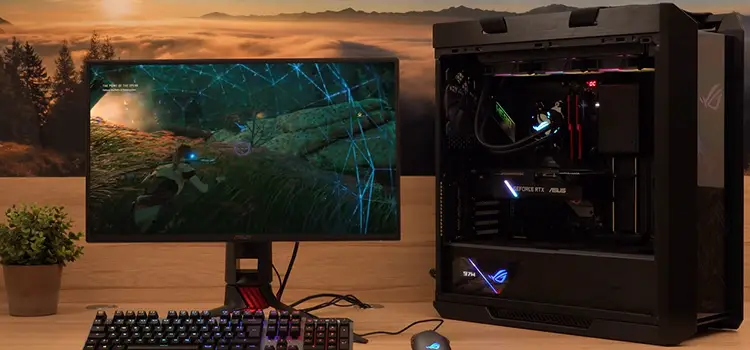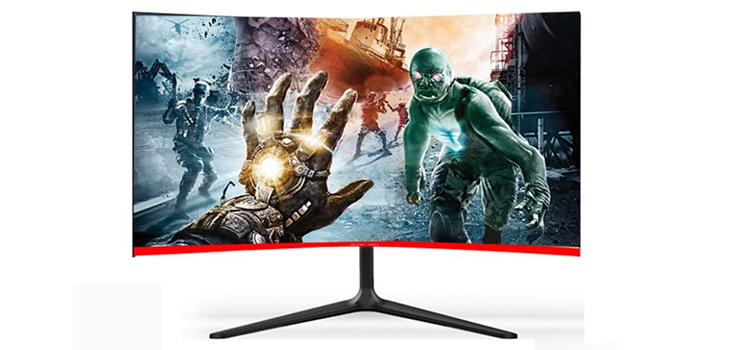1ms vs 4ms Response Time | Isn’t 1ms More Quick Response Time?
The response is the amount of time it takes for a monitor or panel to change the properties of each pixel. A monitor’s reaction time measures how long it takes for a pixel to change from one color to the next. For example, from red to green or blue to black. The quicker this modification is made, the faster the picture updates will be. As a result, the display is more fluid and the refresh rate is higher.

Comparison Between 1ms and 4ms Response Time
To determine the differences between 1ms and 4ms response time, read the comparison table below carefully first –
| 1 ms Response Time | 4 ms Response Time |
| It takes 1 millisecond to draw the pixel on each frame. | It takes 4 milliseconds to draw the pixel on each frame. |
| Errors on the display with a 1ms response time are hard to detect by the human eye. | Errors on the display with a 4ms response time can be detected by the human eye. You can easily detect blurred images. |
| The display with a 1ms response time updates colors, images, and image pixels at the same time | The display with a 4ms response time is four times slower than the display with a 1ms response time. |
| A display with a 1ms response time can achieve up to 240Hz refresh rate. | A display with a 4ms response time can achieve a 60Hz to 144Hz refresh rate. |
| The display with a 1ms response time is excellent for gaming, especially for FPS games. | The display with a 4ms response time isn’t considered the best display for gaming as gamers might face blurry images and ghosting. |
Zero will never be achieved with existing technology. If you’re a gamer or a display user, it all starts at 1ms. Consider using a display with a 1ms reaction time to play a first-person shooter. You use the turn-left button to control your automobile. Your display must update the image you view after receiving this information from your computer or console.
On a 4ms display, this exercise will take four times as long as it would on a 1ms monitor. Of course, you won’t notice much of a change because everything happens in milliseconds. However, if you’re a committed gamer, every second counts because games are designed to be responsive. Reaction time is what causes lags, delays, and smooth runs.
A study of monitor response times demonstrates that different panel types allow for somewhat different response times. TN panels have the advantage of being faster with responses, notwithstanding the little gaps that are present now.
As a result, they’re more suited to games that need rapid reactions.
Almost every TN panel now has a 1-ms response time. They are the only ones that can support 240Hz refresh rates as a result. VA and IPS panels, on the other hand, often take 2–4 milliseconds to respond while giving significantly better colors and viewing angles.
Frequently Asked Questions
Is There a Big Difference Between 1ms and 4ms Response Time?
No, there isn’t much differences between 1ms and 4ms response time. However, the lower rate of response time is able to change color and image faster, thus the error can’t be detected by human eyes. So, you won’t face any issues in 1ms but may face blurry image or ghosting in 4ms.
Is 4ms a Good Response Time?
Yes, a 4ms response time is considered a very short response period and it is good for gaming. Especially for professional gaming, the response time should be less than 4ms. However, elite gamers prefer a lower response time than 4ms which is 1ms.
Is 4ms Slow for Gaming?
No, 4ms is fast enough for most games including FPS games. But it may be considered a slow response time for gaming than 1ms displays. 1ms is an extremely low response time which is excellent for gaming. But 4ms is the average response time for gaming.
What Response Time Is Best for Gaming?
A lower response time is the best for gaming. The ideal range of response time for gaming is 1 ms to 5 ms.
Conclusion
Whether you’re using a 1-ms or 4-ms monitor, one thing is critical to remember. The larger the monitor’s screen, the slower the reaction time. Furthermore, the higher the resolution, the faster the response time.
.
Subscribe to our newsletter
& plug into
the world of PC Hardwares
![[2 Fixes] 1600×1200 Max Resolution on a 1920×1080 Monitor in Windows 11/10](https://www.hardwarecentric.com/wp-content/uploads/2021/10/1600x1200-max-resolution-on-a-1920x1080-monitor.jpg)


![[EXPLAINED] Can I Get 200 FPS on 60Hz Monitor?](https://www.hardwarecentric.com/wp-content/uploads/2023/06/Can-I-Get-200-FPS-on-60Hz-Monitor.webp)

![[Troubleshooting] Acer Black Screen No BIOS: Display Error](https://www.hardwarecentric.com/wp-content/uploads/2023/10/Acer-Black-Screen-No-BIOS.webp)
